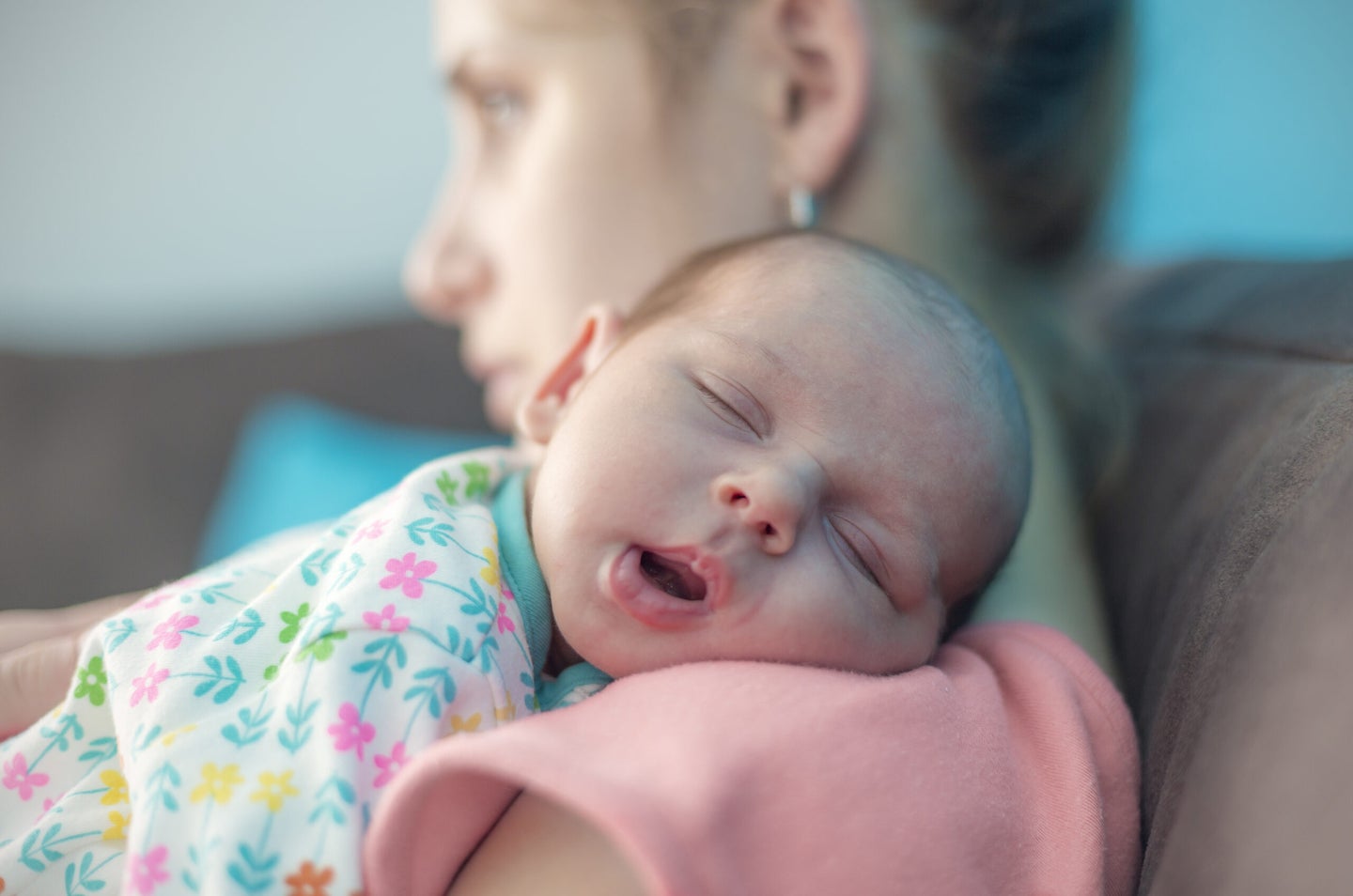A new drug for postpartum depression could help everyone
A significant overlap might exist between the two distinct variations of the disease.

The first drug to treat postpartum depression, a condition that affects up to 1 in 7 women, was approved by the Food and Drug Administration this week. The medication, called brexanolone, is delivered by infusion and, in clinical trials, significantly reduced depressive symptoms compared with a placebo.
What’s more, the drug targets a hormonal pathway that hasn’t been used in antidepressants in the past. As a result, experts say, brexanolone opens up a new avenue for research—both for postpartum depression, and for major depressive disorder.
Postpartum depression, unlike major depressive disorder, has a very specific cause: giving birth. The new drug is a synthetic form of the hormone allopregnanolone, which drops dramatically after birth. The hormone—and therefore, the drug—regulates the neurotransmitter GABA, which is implicated in depression and mood changes.
While researchers know much more about the mechanisms behind major depressive disorder than they do about postpartum depression, they’ve found similarities between the two. “There’s significant overlap,” says Kristina Deligiannidis, director of Women’s Behavioral Health at Zucker Hillside Hospital in New York. Both have been linked to issues with neurotransmitters, like serotonin, as well as the brain circuits that regulate stress and inflammation.
There’s also some genetic overlap, says Jennifer Payne, director of the Women’s Mood Disorders Center at Johns Hopkins School of Medicine. “Some genes implicated in major depression are also implicated in postpartum. We know, though, that a portion of the risk for postpartum does not overlap.”
It’s also challenging to compare the two because they’re often studied separately, Deligiannidis says. “A real gap is that patients with both major depressive disorder and postpartum depression are not in the same study.”
Payne says researchers suspect that the trigger for postpartum depression rests in that hormonal shifts that happen directly after delivery. However, she says, “It’s not clear how that exactly plays into the pathology of depression.”
Nevertheless, targeting GABA, as brexanolone does, might be useful for more than just postpartum depression. It’s often discussed as a potential target for antidepressants more generally. “You may not have hormonal triggers in major depressive disorder,” Deligiannidis says. “But this is a whole novel mechanism of action.”
Sage Therapeutics, which developed the new drug, is also developing an oral pill that targets the same mechanism. The pill works well in postpartum depression, according to the results from clinical trials. Other trials show it to be effective in major depressive disorder, too.
“It’s been tested in major depressive disorder and in postpartum depression, and works about the same,” Deligiannidis says.
The approval of the infused version of the drug for postpartum depression is exciting: It works rapidly, and just one infusion can lead to long-term symptom relief. The awareness that comes along with having a drug approved specifically for postpartum might also increase screening for the condition, Deligiannidis says.
However, the drug is expensive—it’ll cost $34,000 per patient without insurance—and requires that patients check into a hospital to receive a single 60-hour infusion of the medicine, which might be logistically impossible for many women.
“I’m much more excited from a researcher’s perspective than from a clinicians. It’s going to be hard to use,” Payne says. “From a research perspective, this is an incredible breakthrough. I think it will lead to more and more interesting research on mood disorders.”
Payne, for example, says that she’d like to see if the new drug might be able to prevent the onset of depression in women who are at a high risk. Alongside questions about the new drug’s efficacy in major depressive disorder, future research might also consider if blood biomarkers might predict who will respond to this avenue of treatment, or if the fast-acting nature of the drug can hold clues to developing other fast acting medications for other forms of depression.
“This is a new window into the treatment of depression,” Deligiannidis says. “It’s exciting that this new modality is going to debut in women’s mental health.”